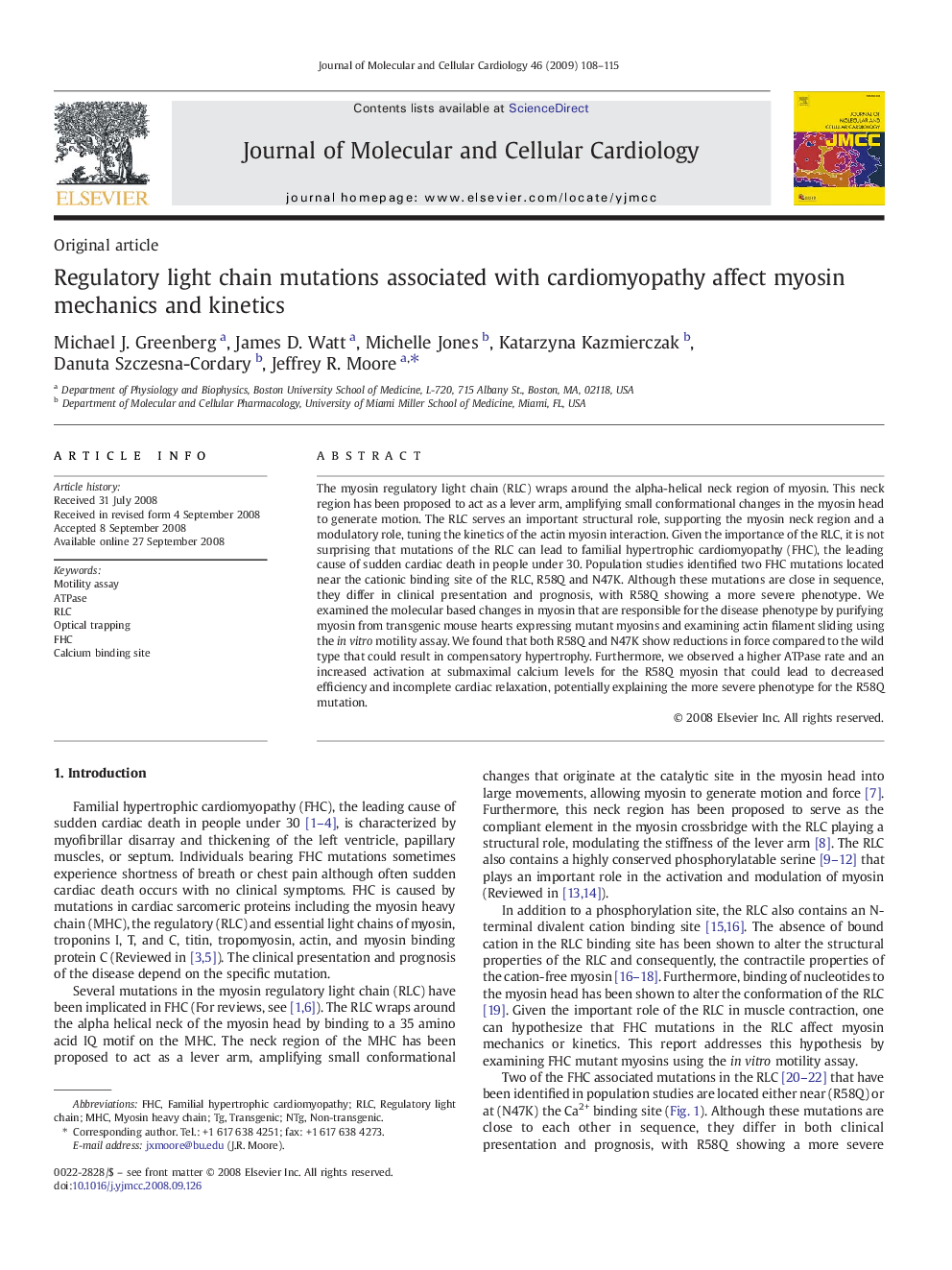| Article ID | Journal | Published Year | Pages | File Type |
|---|---|---|---|---|
| 2191147 | Journal of Molecular and Cellular Cardiology | 2009 | 8 Pages |
The myosin regulatory light chain (RLC) wraps around the alpha-helical neck region of myosin. This neck region has been proposed to act as a lever arm, amplifying small conformational changes in the myosin head to generate motion. The RLC serves an important structural role, supporting the myosin neck region and a modulatory role, tuning the kinetics of the actin myosin interaction. Given the importance of the RLC, it is not surprising that mutations of the RLC can lead to familial hypertrophic cardiomyopathy (FHC), the leading cause of sudden cardiac death in people under 30. Population studies identified two FHC mutations located near the cationic binding site of the RLC, R58Q and N47K. Although these mutations are close in sequence, they differ in clinical presentation and prognosis, with R58Q showing a more severe phenotype. We examined the molecular based changes in myosin that are responsible for the disease phenotype by purifying myosin from transgenic mouse hearts expressing mutant myosins and examining actin filament sliding using the in vitro motility assay. We found that both R58Q and N47K show reductions in force compared to the wild type that could result in compensatory hypertrophy. Furthermore, we observed a higher ATPase rate and an increased activation at submaximal calcium levels for the R58Q myosin that could lead to decreased efficiency and incomplete cardiac relaxation, potentially explaining the more severe phenotype for the R58Q mutation.
